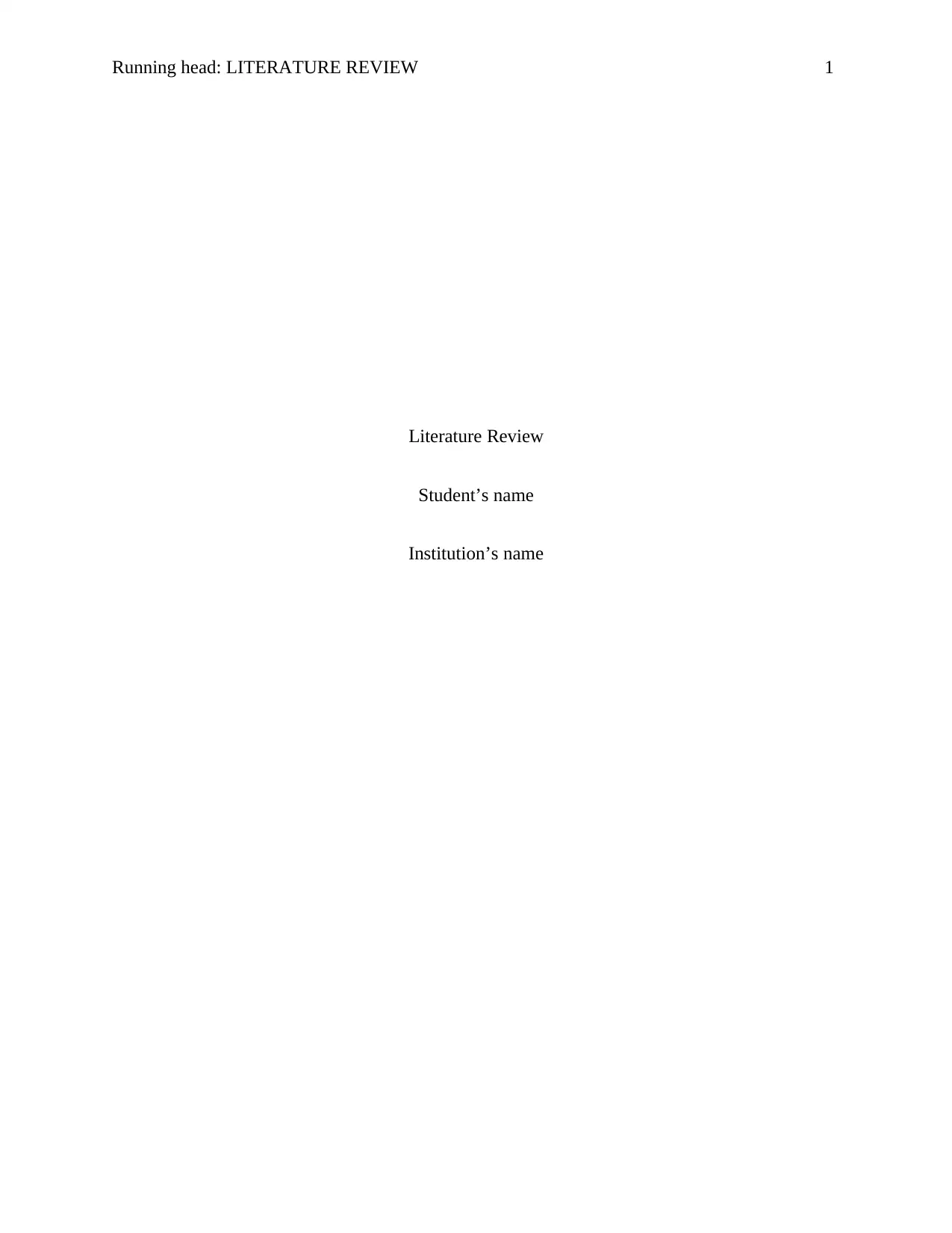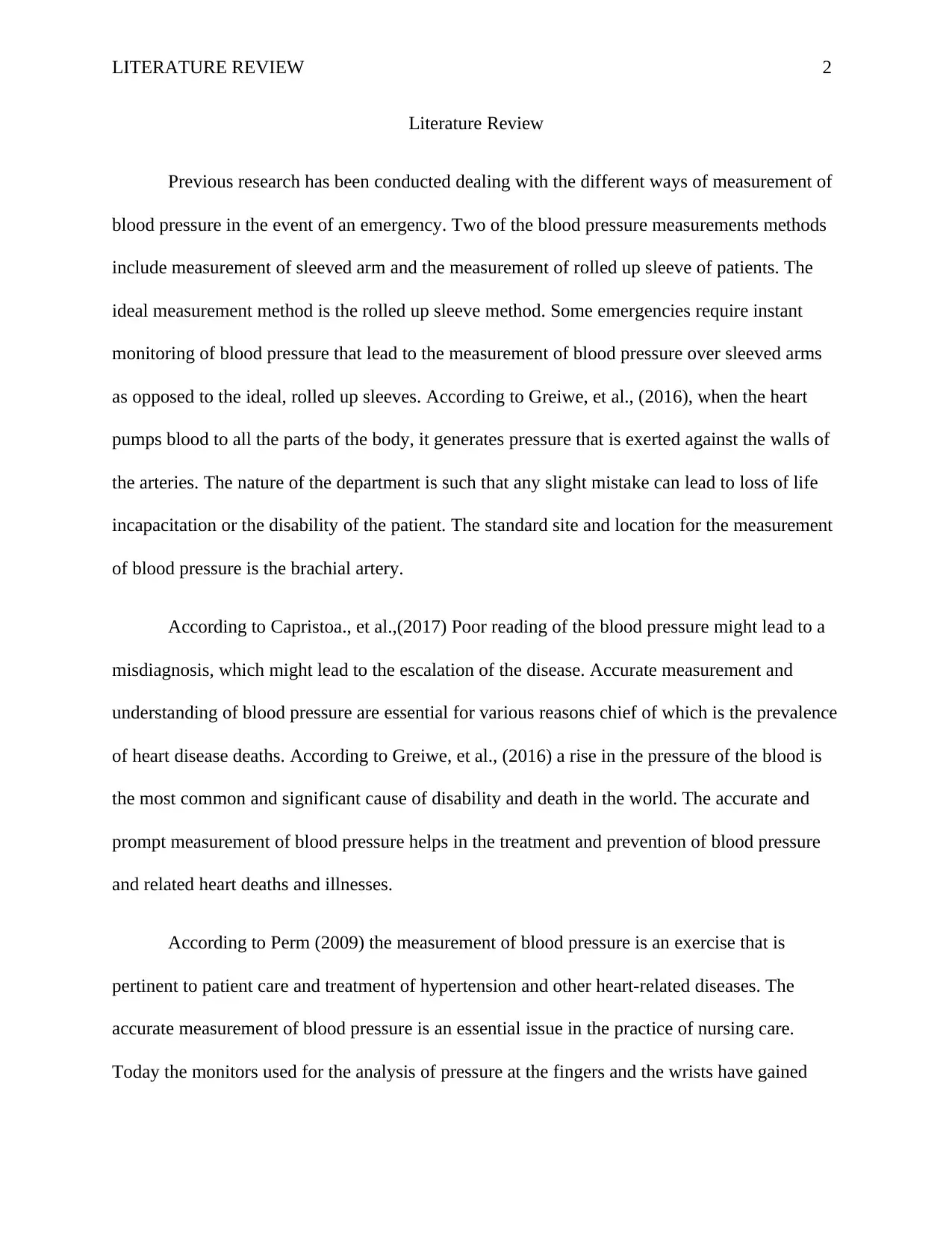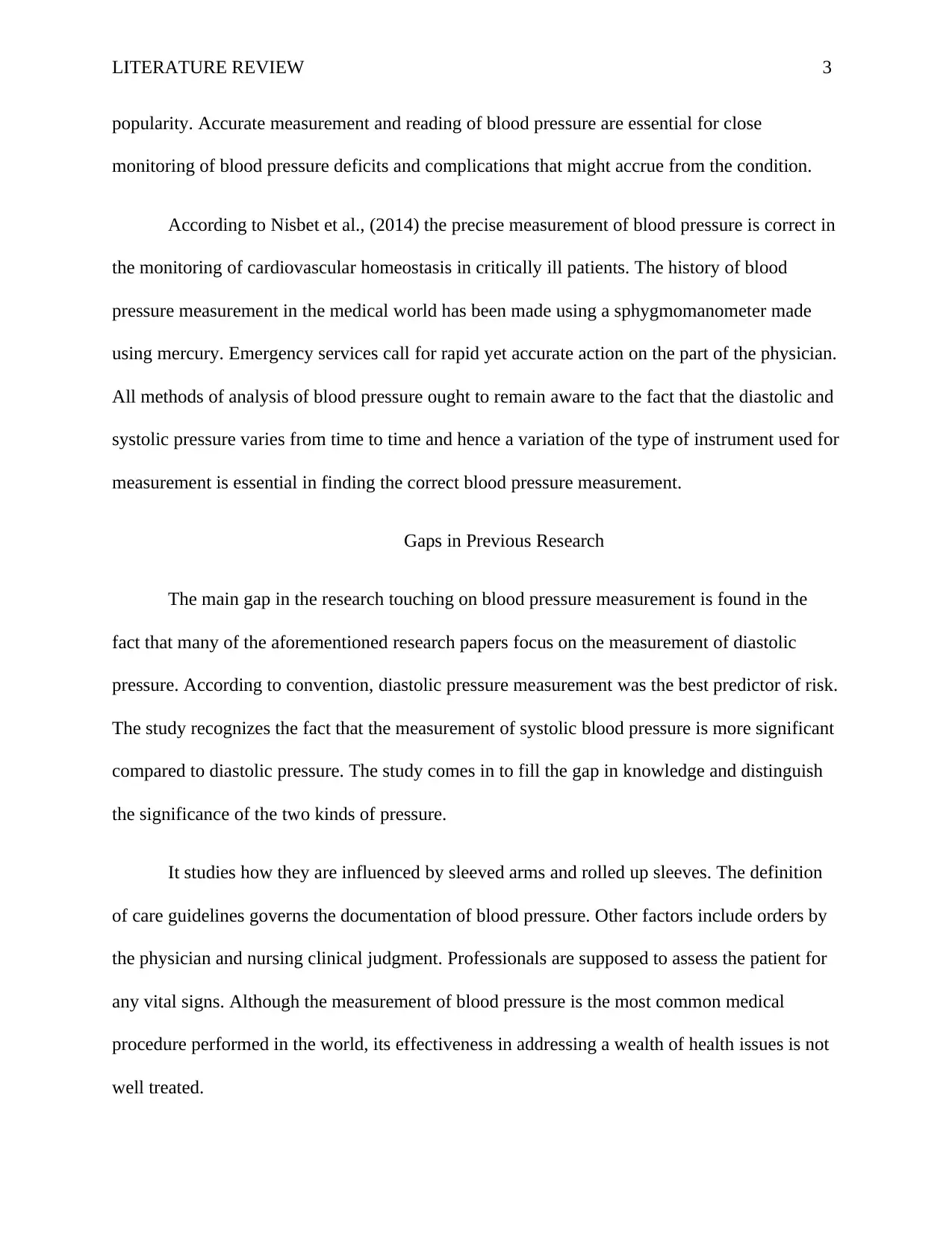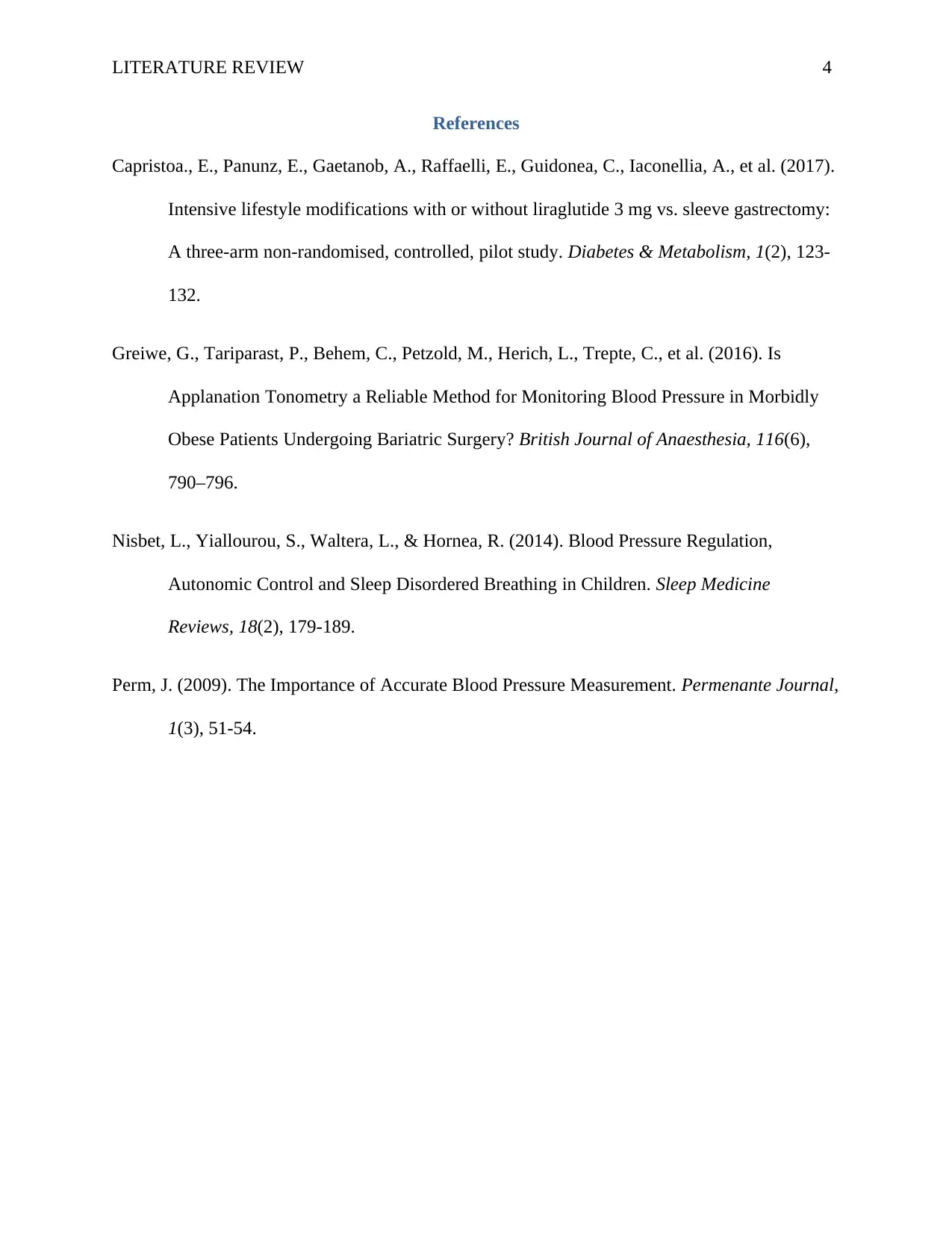Analysis of Blood Pressure Measurement Methods: A Literature Review
VerifiedAdded on 2021/04/17
|4
|862
|41
Literature Review
AI Summary
This literature review examines various methods of blood pressure measurement, focusing on the differences between measuring over sleeved arms and rolled-up sleeves, particularly in emergency situations. It highlights the importance of accurate blood pressure readings for diagnosing and treating cardiovascular issues, emphasizing that inaccurate readings can lead to misdiagnosis and the escalation of diseases. The review discusses the standard practice of measuring blood pressure at the brachial artery and the growing use of finger and wrist monitors. It also addresses the significance of both systolic and diastolic pressure measurements, noting gaps in previous research that often prioritize diastolic pressure. The review references several studies and articles, underscoring the need for precise blood pressure measurement in patient care and treatment, as well as the monitoring of cardiovascular homeostasis in critically ill patients. The study aims to fill the gap in knowledge and highlight the significance of systolic blood pressure measurement.
1 out of 4











![[object Object]](/_next/static/media/star-bottom.7253800d.svg)